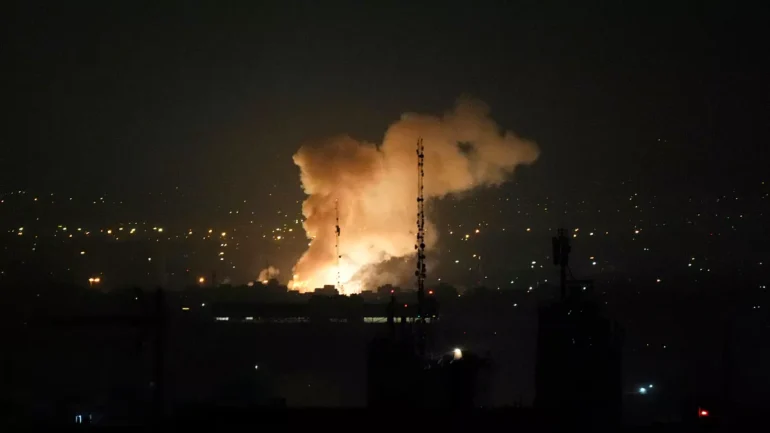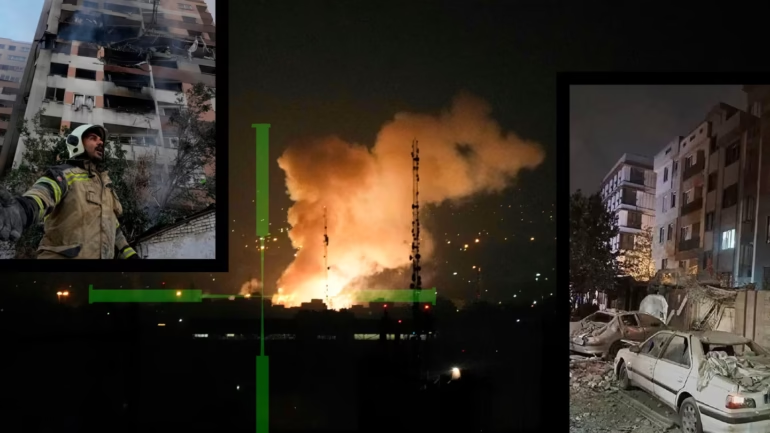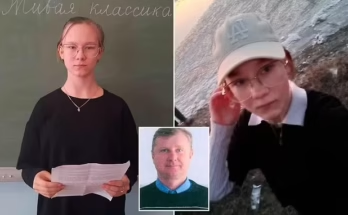Operation Rising Lion: A Bold Preemptive Strike
Operation Rising Lion was initiated by Israel on June 13, 2025. It was a broad military campaign that included more than 200 fighter jets and 330 precision-guided munitions in covert drone strikes inside Iran with Mossad’s help (Reuters). The operation targeted over a hundred sites and locations: the main Natanz nuclear enrichment facility in Iran, missile installations, underground command centers, senior military residences, and strategic air defense sites (BBC).

Primary Targets and Tactical Execution
Israel’s strikes were aimed at setting back Iran’s ability to produce a nuclear weapon and at its military command structure. The core targets included:
- Natanz Nuclear Enrichment Complex:
- A sprawling enrichment site that is home to thousands of centrifuges critical to Iran’s nuclear program (Al Jazeera).
- Missile-and Air-Defense Site:
- Iran’s air defense facilities and missile sites near Isfahan, Hamadan, and Tabriz airbases were bombed to destroy the Islamic Republic’s defenses (The Times of Israel).
- Residences of Top Iranian Commanders:
- Residences and compounds of Hossein Salami (IRGC chief), and Mohammad Bagheri (armed forces chief), along with other high-ranking and nuclear scientists: Fereydoun Abbasi and Mohammad Mehdi Tehranchi, were targeted, thus significantly diminishing Iran’s military and scientific heads (The Guardian).
Israel characterized the assault as a decisive campaign aimed at rolling back Iran’s nuclear threat. Prime Minister Netanyahu remarked that the operation would continue “as many days as it takes,” underlining the seriousness of their objectives (Haaretz).
Casualties, Destruction & Immediate Fallout
Initial reports by Iranian state television put the death toll at a minimum of 78 and the number of wounded at 329, including civilian casualties in Tehran and outlying areas. Dozens of the dead were senior officers and senior nuclear scientists, including many unpaid or informers for Iran’s atomic management (Reuters).
The IAEA also indicated, following the destruction of some of the fuel-enrichment facilities in Natanz, that there was no release of radiation, raising hopes that the environmental risks had been minimized (IAEA).
Iran’s Response and the Escalation Cycle of Flight

Iran responded immediately after the Israeli attack with a massive Israeli attack, setting in motion in just a few hours over 100 Iranian drones against Israel. Many of the drones were intercepted by Israel’s Iron Dome, but several ended up in residential areas, causing minimal damage and casualties(The New York Times).
Iran’s supreme leader, Ali Khamenei, decried the Israeli measure as a “satanic, bloodthirsty regime,” and promised a severe response. For its part, the Iranian Foreign Ministry cautioned that the U.S. would be complicit in the fallout of backing Israel’s unilateral move(PressTV).
Global Reactions & Diplomatic Turbulence

The attack triggered widespread concern around the globe:
- Western Diplomats:
- By US and UK diplomats, the de-escalation was called for urgently, to avoid a broader regional conflict, as they aimed to prevent it. (BBC).
- Trump’s Support:
- Trump, the former president of the United States, was very satisfied with the operation and called it “excellent,” while U.S. officials pointed out that this attack was largely unilateral, with little pre-consultation of allies. (The Washington Post).
- IAEA Emergency Meeting:
- International Atomic Energy Agency (IAEA) held an urgent meeting on the background of concerns that have started to proliferate over the issue of nuclear security and were further fuelled by Israeli strikes..(IAEA).
- Airlines and Diplomatic Disruptions:
- Israel shut its diplomatic mission, and many airlines changed the course of their flight over the region, due to growing instability in the Middle East, as was noted by Al Jazeera. (Al Jazeera).
Next Steps in the Investigation & Strategy
The interplay of events that followed the operation has prompted a comprehensive inquiry into how exactly the strike was implemented. The black boxes and radar data, along with weapon systems analysis, are being looked at in order to find out how the assault was done. Experts who represent such major companies as Boeing, GE Aerospace, and the FAA are helping to analyze the event. (Reuters).
It is anticipated that Israel will keep its extended operational approach and main objectives in the areas are to hinder Iran’s nuclear weapons development and other threats within and along the region (Military Times).
Potential for Regional Spillover
Operation Rising Lion marks a precarious step-up in the Middle Eastern conflict. Analysts are worried about the possibility of proxy lash back from groups like Hezbollah or Houthi rebels who could hit Israeli or Western interests (Middle East Eye).
The threat of an escalated conflict on a bigger scale is very high as tensions are still rife and the region ends up in a situation where it is pretty much probable to have a full-scale war (The National).
Why This Attack Marks a Turning Point
- First Direct Air Assault on Iran by Israel Since the 1980s
- Operation Rising Lion is the first direct air strike on Iran by Israel since the 1980s, marking a major shift in Middle Eastern warfare tactics (Haaretz).
- Challenging Global Norms
- This bold preemptive strike challenges established international norms regarding nuclear deterrence, drone warfare, and foreign military policy. It raises important questions about preventive military strikes and their impact on global peace and security (Foreign Affairs).
- The Road Ahead for Regional Stability
- The aftermath of this operation will shape regional stability and international alliances in the coming years. The global response—whether diplomatic, military, or covert—will determine the future course of the Middle East (Council on Foreign Relations).
Conclusion:
Operation Rising Lion is a military milestone that has altered the trajectory of the Middle East conflict. Israel’s preemptive military action against Iran has further complicated an already volatile situation, potentially pushing the region closer to a full-scale war. The international response, as well as the reactions from Iran and its proxies, will be pivotal in determining whether the situation can be de-escalated or if this marks the beginning of a new phase of tension and conflict (Al Jazeera).



